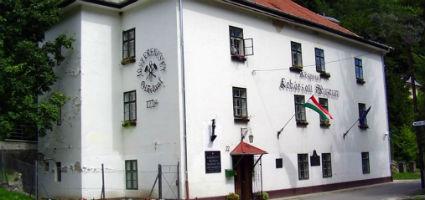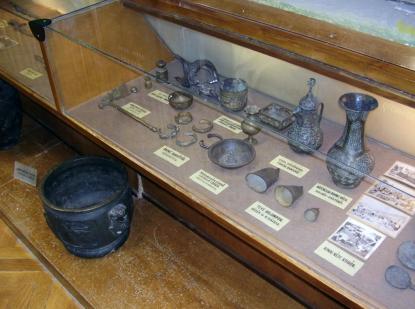2024. December 26. Thursday
Hungarian Museum for Science, Technology and Transport - Museum of Metallurgy - Miskolc - Hámor
 |
Address: 3517, Miskolc - Hámor Palota u. 22.
Phone number: (46) 379-375
E-mail: kohmuz@kohmuz.t-online.hu
Opening hours: Tue-Wed on prior notice, Thu-Fri 10-16, Sat 10-16
|
Museum tickets, service costs:
|
Ticket for adults
|
500 HUF
|
/ capita
|
|
Ticket for students
|
250 HUF
|
/ capita
|
|
Group ticket for students
|
250 HUF
|
/ capita
|
|
Ticket for pensioners
|
250 HUF
|
/ capita
|
|
Ticket for families
(2 adults + more children)
|
1100 HUF
|
/ family
|
|
Group guide
(1-5 people)
|
400 HUF
|
/ capita
|
|
Group guide
(6-20 people)
|
3200 HUF
|
/ group
|
|
Group guide
(20 people)
|
5500 HUF
|
/ group
|
|
Group guide
(in German)
|
8500 HUF
|
/ group
|
|
Photography
|
500 HUF
|
|
|
Video
|
1200 HUF
|
The permanent exhibition presents the development of iron metallurgy from the Antiquity until nowadays. The development of iron metallurgy is presented in four wards. Besides, the visitors may also learn of the history of the development of wire and screw production, as well as the examination of material in iron metallurgy.

The models, scale-models and slides present the first iron metallurgy plants, the facilities in the Middle Ages and New Age, as well as the development of processions and technique. There are many curiosities at the permanent exhibition: eg. two salamander furnaces found in Imola and Kőszegfalva or a steel chisel made in Diósgyőr used at the regulation of the Danube.
The visitors can learn of the role of iron in human history, in technical and cultural development, as well as of the hard but nice work related to metals.

The models, scale-models and slides present the first iron metallurgy plants, the facilities in the Middle Ages and New Age, as well as the development of processions and technique. There are many curiosities at the permanent exhibition: eg. two salamander furnaces found in Imola and Kőszegfalva or a steel chisel made in Diósgyőr used at the regulation of the Danube.
The visitors can learn of the role of iron in human history, in technical and cultural development, as well as of the hard but nice work related to metals.
|
Related activities
|
||
